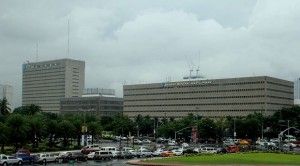Consumer confidence in the third quarter dropped to its lowest level in almost four years mainly due to concerns over the rising prices of basic goods and political uncertainty.
But monetary authorities are still hopeful that the rate of rise in consumer prices will decelerate this month and ease the pressure on prices.
The Consumer Expectations Survey (CES) for the third quarter of 2014 showed that the overall confidence index (CI) slid to -26.3 percent from the -17.3 percent of the previous quarter.
A negative CI indicates that the pessimists among consumers outnumbered those who maintained an optimistic view.
The third quarter index is the lowest posted during the Aquino administration since the second quarter of 2011 when it reached 24.1 percent.
According to the Bangko Sentral ng Pilipinas (BSP), consumers were bearish due to the rising prices of basic goods, higher household expenses, political concerns especially over the Disbursement Acceleration Program (DAP) and Priority Development Assistance Fund (PDAF), as well as uncertainties over income, job opportunities and the business environment in general.
The outlook for the fourth quarter also slipped to -1 percent from a neutral level of the previous survey, as consumers anticipated even higher commodity prices during the holidays.
Also, respondents “expressed concerns over the utilization of government funds” during the final three months of the year, the BSP said.
For the next 12 months, consumer outlook remained positive, although it was less favorable than before.
Despite the decline in consumer spending in the third quarter, BSP Deputy Governor and officer-in-charge Diwa C. Guinigundo noted that buying conditions were still stable especially for motor vehicles and residential units.
The third quarter CES showed that consumers considered the July-September period as a “favorable time” to purchase big-ticket items such as cars and houses.
For instance, he said, the outlook on buying conditions for real estate hit a record 32.6 percent in the third quarter—the highest since the first quarter of 2007.
Guinigundo told reporters that, following Thursday’s key rate adjustment, “we might be seeing a more moderate inflation rate in September.”
The central bank will announce the official forecast at the end of the month.
“We should see the effects of the previous moves of the BSP. The 200-basis-point increase in the reserve requirement should be able to mop up a substantial amount of liquidity in the system. The 50-basis-point hike in SDA and policy rates will also help mop up additional liquidity in the system and influence the low interest rate in the market today,” Guinigundo said.
The BSP official noted that oil prices were easing while the government is also addressing concerns over port congestion and rice supply, which had been causing spikes in the prices of basic consumer products.
